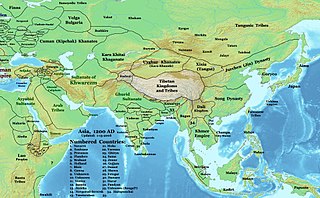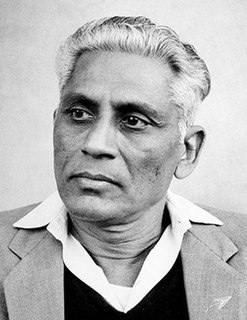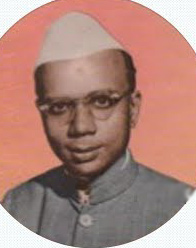Ṛtusaṃhāra, often written Ritusamhara, is a long poem or mini-epic in Sanskrit attributed to Kalidasa. The poem has six cantos for the six Indian seasons- grīṣma (summer), varṣā/pāvas (monsoon/rains), śarat (autumn), hemanta (cool), śiśira (winter), and vasanta (spring). It is considered to be Kalidasa's earliest work.

Civaka Cintamani, also spelled as Jivaka Chintamani, is one of the five great Tamil epics. Authored by a Madurai-based Jain ascetic Tiruttakkatēvar in the early 10th century, the epic is a story of a prince who is the perfect master of all arts, perfect warrior and perfect lover with numerous wives. The Civaka Cintamani is also called the Mana Nool. The epic is organized into 13 cantos and contains 3,145 quatrains in viruttam poetic meter. Its Jain author is credited with 2,700 of these quatrains, the rest by his guru and another anonymous author.
The history of Gujarati literature may be traced to 1000 AD, and this literature has flourished since then to the present. It is unique in having almost no patronage from a ruling dynasty, other than its composers.
Ponna (c. 945) was a noted Kannada poet in the court of Rashtrakuta Dynasty king Krishna III (r.939–968 CE). The emperor honoured Ponna with the title "emperor among poets" (Kavichakravarthi) for his domination of the Kannada literary circles of the time, and the title "imperial poet of two languages" for his command over Sanskrit as well. Ponna is often considered one among the "three gems of Kannada literature" for ushering it in full panoply. According to the scholar R. Narasimhacharya, Ponna is known to have claimed superiority over all the poets of the time. According to scholars Nilakanta Shastri and E.P. Rice, Ponna belonged to Vengibisaya in Kammanadu,Andhra Pradesh, but later migrated to Manyakheta, the Rashtrakuta capital, after his conversion to the Jainism.

Hoysala literature is the large body of literature in the Kannada and Sanskrit languages produced by the Hoysala Empire (1025–1343) in what is now southern India. The empire was established by Nripa Kama II, came into political prominence during the rule of King Vishnuvardhana (1108–1152), and declined gradually after its defeat by the Khalji dynasty invaders in 1311.

Umashankar Jethalal Joshi was an Indian poet, scholar and writer known for his contribution to Gujarati literature.
William Norman Brown was an American Indologist and Sanskritist who established the first academic department of South Asian Studies in North America and organized the American Oriental Society in 1926. He was the Professor of Sanskrit at the University of Pennsylvania for most of his academic career. He was president of the Association for Asian Studies in 1960. He is considered the founder of the field of South Asian Studies, which he pioneered in his career over four decades at the University of Pennsylvania, where he helped to found the Department of Oriental Studies (1931), and later single-handedly founded the Department of South Asia Regional Studies (1948). These departments are now survived by the departments of East Asian Languages and Civilizations, Near Eastern Languages and Civilizations, and South Asia Studies. W. Norman Brown also founded the American Institute of Indian Studies, which was located in the Van Pelt Library at the University of Pennsylvania.

Sukhlal Sanghvi, also known as Pandit Sukhlalji, was a Jain scholar and philosopher. He belonged to the Sthanakvasi sect of Jainism. Pandit Sukhlal lost his eyesight at the age of sixteen on account of smallpox. However, he overcame this handicap and became profoundly versed in Jain logic and rose to become a professor at Banaras Hindu University. Paul Dundas calls him one of the most incisive modern interpreters of Jain philosophy. Dundas notes that Sanghavi represents what now seems to be a virtually lost scholarly and intellectual world. He was a mentor for famous Jain scholar Padmanabh Jaini. During his lifetime he won such awards as the Sahitya Akademi Award and won recognition from the Government of India by getting Padma Bhushan award. Sukhlalji was also known as Pragnachaksu because he was so vastly learned despite being visually challenged.
Muni Jinvijayji was a scholar of orientalism, archeology, indology and Jainism from India.
Fagu, also spelled Phagu, is a genre of poetry in Old Gujarati language popular during early period of Gujarati literature.
Shridhar Vyas was a 14th-15th century poet from western India. He is known for his historical and heroic poetry, Ranmall Chhand.

Jayant Himmatlal Pathak was a Gujarati poet and literary critic from Gujarat, India. He was the president of the Gujarati Sahitya Parishad from 1990 – 1991. He received several awards, including the Sahitya Akademi Award, the Kumar Suvarna Chandrak, the Narmad Suvarna Chandrak, the Ranjitram Suvarna Chandrak and the Uma-Snehrashmi Prize. The Jayant Pathak Poetry Award is named after him.

Bhogilal Jayachandbhai Sandesara was a literary critic, scholar and editor from Gujarat, India. He was a scholar of Sanskrit, Prakrit, Apabhramsha and Old Gujarati language. He also contributed to the field of historical and cultural research. He has edited large number of historical works. He was appointed the president of Gujarati Sahitya Parishad in 1987.
Rasiklal Chhotalal Parikh (1897–1982) was a 20th-century Gujarati poet, playwright, literary critic, Indologist, historian, and editor from Gujarat, India. He was the president of Gujarat Sahitya Sabha and was appointed the president of Gujarati Sahitya Parishad in 1964. He received the Sahitya Akademi Award in 1960 for his play Sharvilak. He is also a recipient of the Ranjitram Suvarna Chandrak and the Narmad Suvarna Chandrak.

Narmakosh, published in 1873, is a monolingual Gujarati dictionary prepared by Narmadashankar Dave (1833–1886), a poet and scholar. Regarded as the first of its kind in the Gujarati language, it contains 25,268 words.
Priyakant Premachand Maniyar was a Gujarati poet from Gujarat, India. He published seven collections of symbolic and imagist poetry, and was awarded the Sahitya Akademi Award posthumously in 1982 for Lilero Dhal (1979), a collection of love songs about Radha and Krishna.

Kanta is an 1882 Gujarati play by Manilal Dwivedi, based on a historical event; the killing of King Jayshikhari of Patan by King Bhuvad of Panchasar. Dwivedi added the characters of Tarala, Haradas and Ratnadas from his own imagination and gave dramatic twists to the original story in order to make the story more suitable for a dramatic retelling. It has been called the most outstanding play of the 19th century in Gujarati literature. Reportedly, the play has elements of Sanskrit drama and Shakespearean tragedy reflected in its construction, due to Dwivedi's recent translation of Sanskrit play Malatimadhavam and studies of Shakespeare's plays. Kanta had moderate success on the stage. The Mumbai Gujarati Natak Mandali inaugurated its theatrical activities by staging this play on 29 June 1889.
Kantilal Baldevram Vyas was a Gujarati linguist, critic and editor from Gujarat, India. He published several works in the field of linguistics including Bhasha Vijnan, Bhasha, Vrutt ane Kavyalankar, Gujarati Bhashano Udgam, Vikas and Swaroop and Bhasha Sanshodhan.
Vastupāla was a prime minister of the Vāghelā king Vīradhavala and his successor Vīsaladeva, who ruled in present-day Gujarat region of India, in the early 13th century. Although he served in an administrative and military capacity, he was also a patron of art, literature and public works. He, together with his brother Tejapāla, assisted in the restoration of peace in the kingdom, and served in a number of campaigns against Lāṭa, Godraha, Kutch and the Delhi Sultanate. The brothers were instrumental in the construction of the Luniga-vasahi temple on Mount Abu and the Vastupala-vihara on Girnar.










